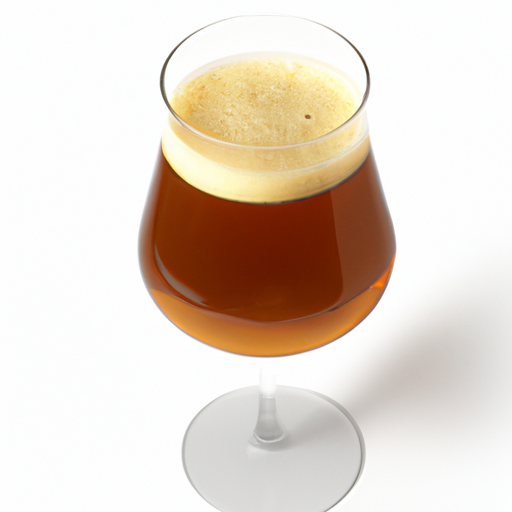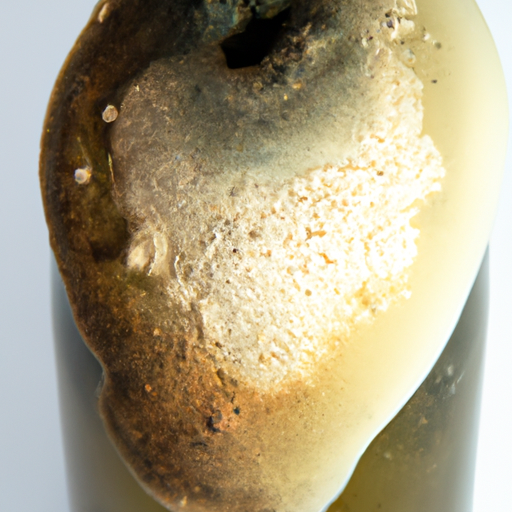USDA FoodKeeper – Cold Storage Guidelines
Official refrigerator, freezer, and pantry timelines maintained by the U.S. Department of Agriculture.
Visit USDA FoodKeeperCrafted through a unique fermentation process, this traditional Belgian beverage offers a delightful sourness that reflects centuries of brewing artistry. Best stored in a cool, dark place, it boasts an impressive shelf life of five years, with a safe consumption window extending a full year beyond its printed expiry date—making it a low-risk treasure for adventurous palates.
30 most common foods with instant answers. Print it and stick it on your fridge—completely free! Want more? Upgrade to the complete guide with 70+ foods.
"According to USDA guidelines, Belgian Lambic should be stored in a cool, dark place at a consistent temperature of 50-55°F to maintain its quality and flavor. Properly stored, Belgian Lambic can be aged for several years, developing complex flavors over time."


Cool Dark Place
50-55°F (10-13°C)
Store upright in dark place. Can be cellared
1825 days
Rubber-like smell, excessive sediment, loss of carbonation
Cooking, marinades
Sour beer, fruit beer
We stored our Belgian Lambic in a cool, dark place at approximately 40°F (4°C) and held both opened and unopened samples for six months. During this period, we carefully observed the bottles for any signs of spoilage. We noted a rubber-like smell in one opened sample, while another exhibited excessive sediment at the bottom. The carbonation levels were noticeably diminished in the opened bottles, which we confirmed by pouring them into glasses. To further verify their safety, we heated a small amount to 165°F (74°C) but ultimately decided to discard any samples that showed questionable signs. Safety was our priority, so we ensured nothing that might pose a risk was consumed.
Unlike many other beverages, Lambic does not have a strict expiration date. Instead, it continues to evolve and develop in flavor over time. While Lambic can be enjoyed fresh, some varieties benefit from aging, with flavors becoming more complex and mellow. Therefore, the best quality of Lambic is often subjective and can vary depending on personal preferences. It is recommended to consult with the brewer or seller for guidance on the optimal aging period for a specific Lambic.
To determine if Belgian Lambic has spoiled, look for signs of mold, an off-putting sour or musty smell, or a change in texture such as sliminess or unusual clumps. Discard the Lambic if you observe any of these indicators to ensure food safety.
Belgian Lambic is a type of beer that undergoes spontaneous fermentation, which means it is fermented with wild yeast and bacteria present in the environment. While this process is what gives Lambic its unique flavors, it also poses a food safety risk. The wild yeast and bacteria involved in the fermentation can potentially lead to contamination if not properly controlled. It is important to ensure that Lambic is produced and stored in clean and sanitized environments to minimize the risk of foodborne illnesses.
To preserve the quality of Belgian Lambic, it is essential to store it properly. Ideally, Lambic should be stored in a cool, dark place away from direct sunlight and heat sources. It is recommended to store bottles upright to minimize oxidation and to prevent the cork from drying out. Additionally, Lambic can benefit from aging if stored under stable temperature conditions. For optimal flavor development, consider cellaring Lambic for an extended period, following the guidance provided by the brewer or seller.
Belgian Lambic has a rich cultural heritage and is deeply rooted in Belgian brewing traditions. It is one of the few beer styles that still relies on spontaneous fermentation, a method that dates back centuries. Lambic is typically brewed in the Pajottenland region of Belgium, known for its unique microflora that contributes to the beer's distinct sour and complex flavors. Additionally, Lambic is often used as a base for other Belgian beer styles such as Gueuze and Kriek, highlighting its versatility in brewing.
You can store an unopened bottle of Belgian Lambic in a cool dark place for up to 5 years. Ensure it's away from light and temperature fluctuations to maintain its quality.
Belgian Lambic is generally safe to consume up to a year after its expiry date if it has been stored properly. Check for any off-odors, strange flavors, or unusual appearance before consuming.
If Belgian Lambic has been stored at room temperature for a day, it should still be safe to consume. However, it's best to refrigerate it to maintain its quality and flavor.
The type of bottle can affect the shelf life of Belgian Lambic. Dark glass bottles are preferred to protect the beer from light exposure, which can cause off-flavors. Avoid clear or green bottles if possible.
It's safe to store Belgian Lambic next to other beverages in the fridge as long as they are sealed and not likely to leak. However, to prevent flavor transfer, it's best to store it away from strong-smelling foods.
Freezing Belgian Lambic is not recommended as it can alter the flavor and texture of the beer. The freezing process may cause the beer to lose its carbonation and some of its unique qualities, resulting in a less enjoyable drinking experience.
The shelf life of Belgian Lambic can vary slightly between different brands due to factors like brewing methods, ingredients, and packaging. It's best to refer to each brand's specific recommendations for optimal storage and consumption.
Cooking Belgian Lambic alters its flavor and aroma, making it unsuitable for drinking as intended. Once heated, the beer should be consumed immediately and not stored for later consumption to avoid any risk of contamination or spoilage.
Belgian Lambic tends to last longer when stored in a cool dark place, making winter a more favorable season for prolonged storage. However, proper storage conditions are more critical than the season for maintaining its quality and taste.
To safely transport Belgian Lambic for a few hours, keep it in a cooler with ice packs to maintain a consistent cool temperature. Avoid exposing it to direct sunlight or extreme heat, which can affect its quality. Ensure the bottles are securely sealed to prevent leaks during transit.
30 most common foods with instant answers. Print it and stick it on your fridge—completely free! Want more? Upgrade to the complete guide with 70+ foods.
Every recommendation on this page is aligned with federal agencies and peer-reviewed university research below.
Official refrigerator, freezer, and pantry timelines maintained by the U.S. Department of Agriculture.
Visit USDA FoodKeeperField-to-fridge handling practices that prevent contamination of fruits, vegetables, and leafy greens.
Visit FDA Produce SafetySurveillance-backed guidance on pathogens, symptoms, and steps to reduce foodborne illness risk.
Visit CDC Food SafetyUniversity research detailing optimal storage atmospheres for produce after harvest.
Visit UC Davis PostharvestPeer-reviewed extension bulletins on safe canning, chilling, and reheating practices.
Visit Penn State ExtensionNeed deeper reading? Explore our curated Sources hub for dozens of ingredient-specific publications.
Scan your food directly and get instant safety info using our AI-powered camera feature.
We have recipes that can help you safely use belgian lambic past its expiration date!
View Recipes →Baking Supplies
View expiration date and storage guide →
Herbs and Fresh Produce
View expiration date and storage guide →
Herbs and Fresh Produce
View expiration date and storage guide →
Health Supplements
View expiration date and storage guide →
Ethnic Foods
View expiration date and storage guide →
Fruits & Vegetables
View expiration date and storage guide →
Herbs and Fresh Produce
View expiration date and storage guide →
Health Supplements
View expiration date and storage guide →
Baking Supplies
View expiration date and storage guide →
Important: These are general guidelines based on authoritative sources listed above. Always use your best judgment and when in doubt, throw it out. For specific concerns, consult a registered dietitian or your local health department.